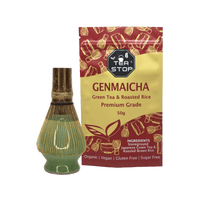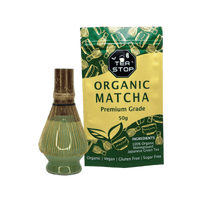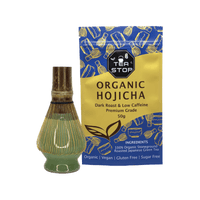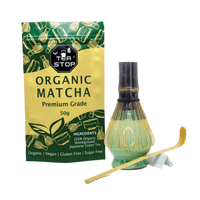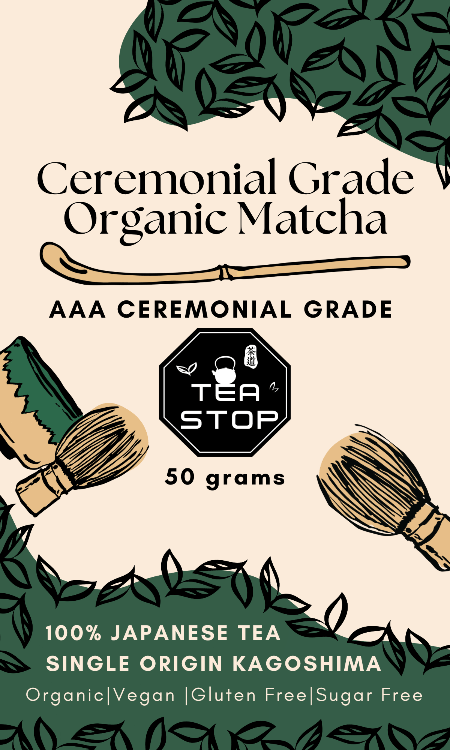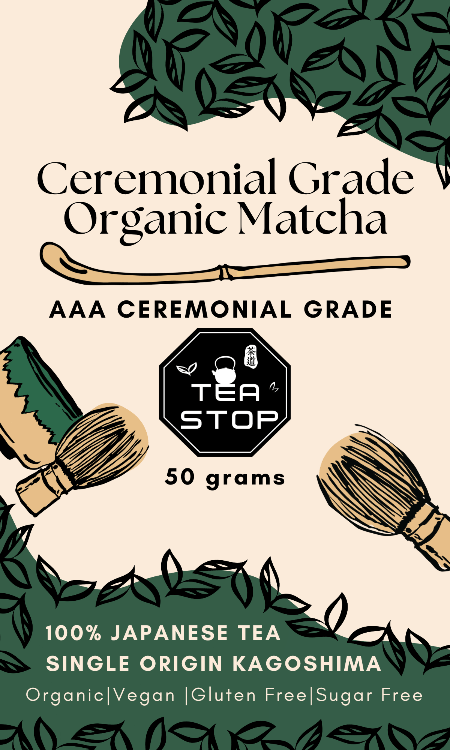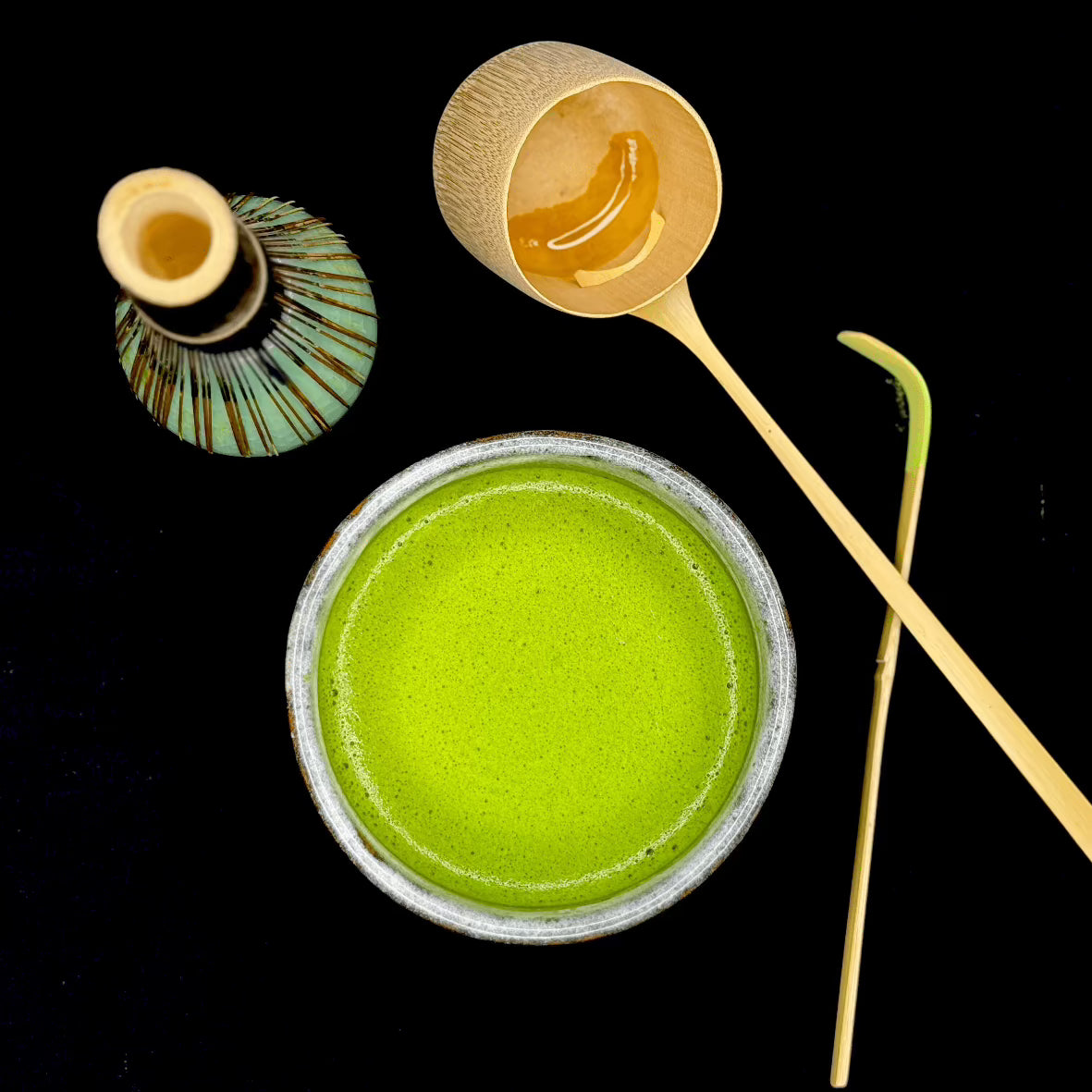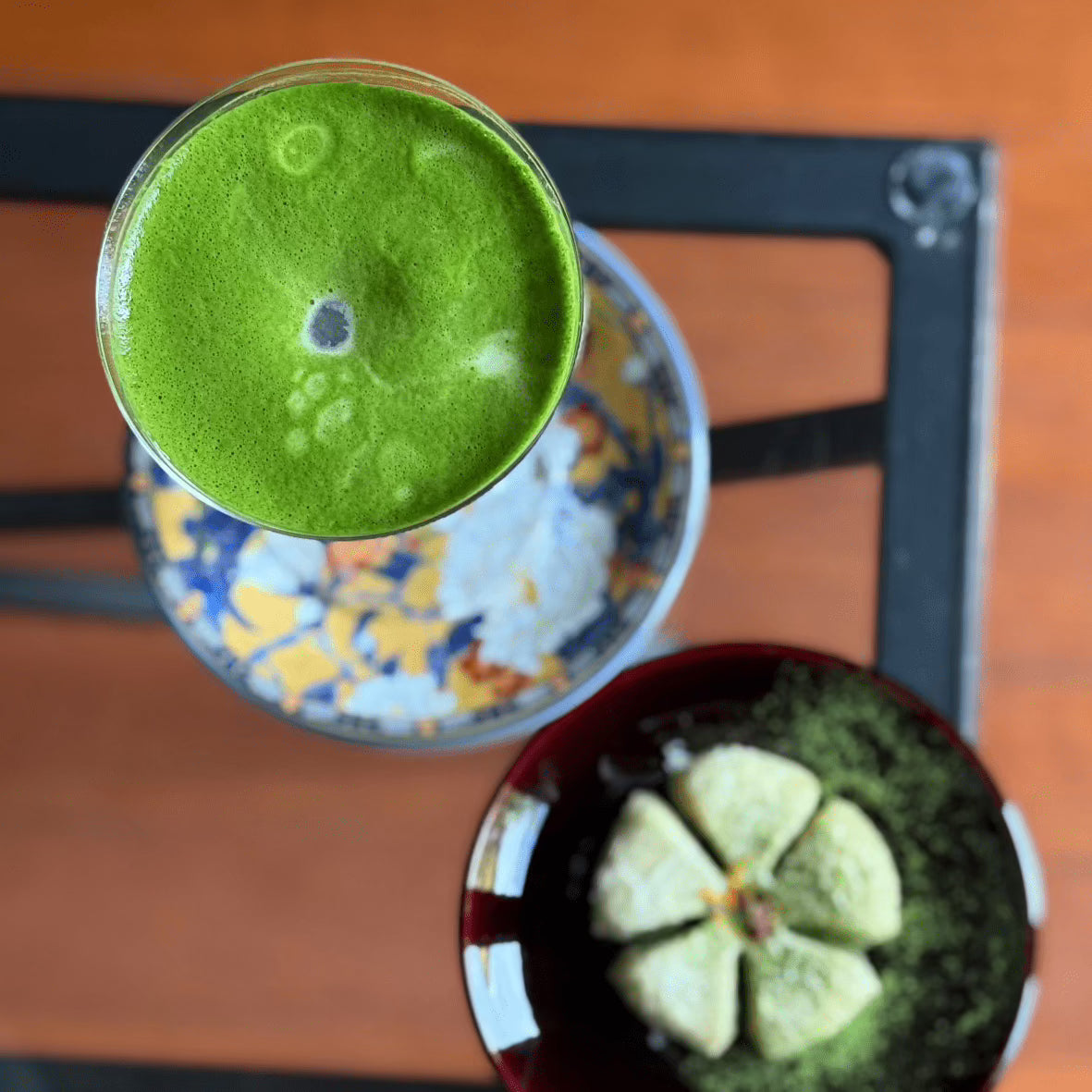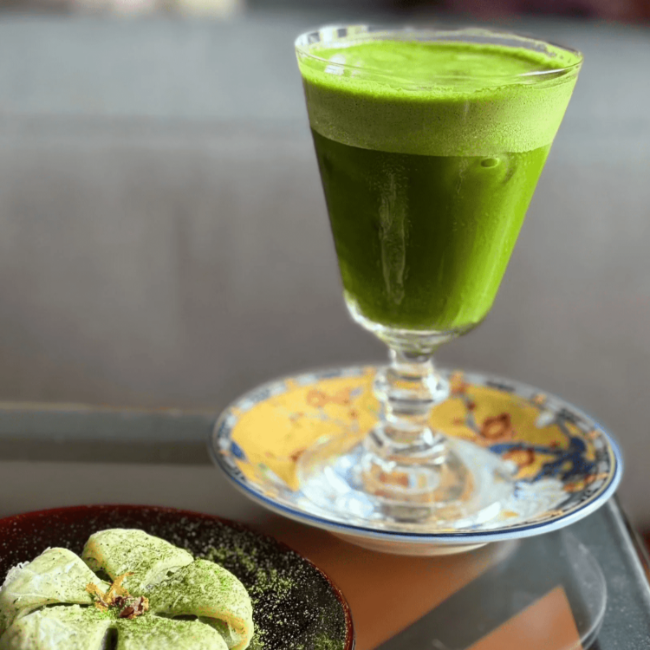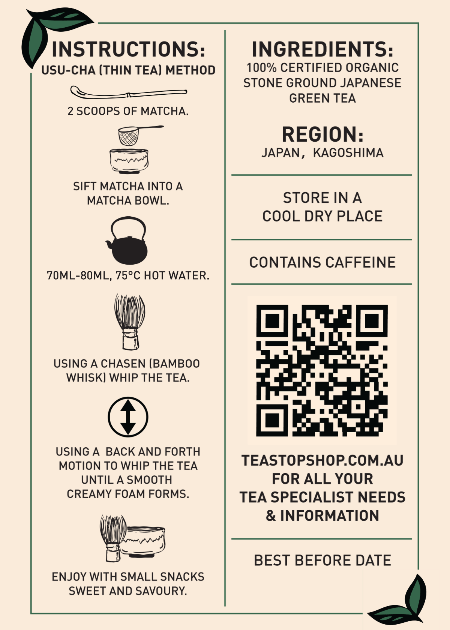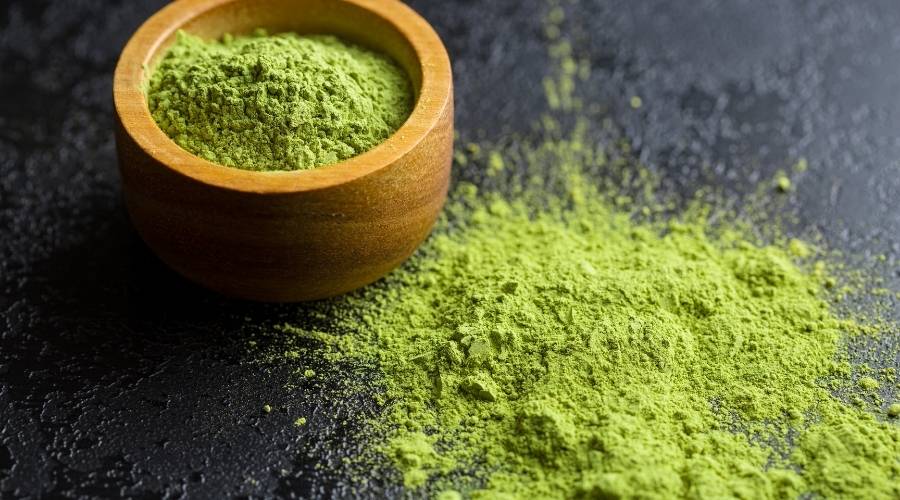
Matcha Powder: The Green Superfood That Stuns the World
Share
Matcha powder, known as a green superfood, is loved by tea lovers and health enthusiasts. Its bright green colour and many benefits make it a top choice in wellness trends. Originally from Japan, matcha has gained popularity not only in Australia but also worldwide.
The Rich History of Matcha
Matcha's appeal goes beyond its taste and health benefits. It has a deep-rooted history in Japan, where it was an essential part of traditional tea ceremonies. These ceremonies hold cultural significance, representing harmony and mindfulness.
The Growing Demand for Matcha
As more people embrace wellness in their everyday lives, the demand for matcha continues to rise. Its reputation as a health booster attracts individuals seeking natural ways to improve their well-being.

The Unique Qualities of Matcha
What sets matcha apart is its distinct production method and nutrient-packed profile. Unlike other teas, matcha involves grinding whole tea leaves into a fine powder, preserving all the beneficial compounds. This process also creates a rich, creamy texture when prepared.
Whether you're an experienced tea drinker or new to the world of matcha, there's something special about this green elixir. It invites you to indulge in its flavours while reaping the rewards of its nutritional goodness.
Matcha isn't just a beverage; it's an experience that connects us with different cultures and promotes self-care. So why not take a moment for yourself? Sip on some matcha and discover the wonders it has to offer.
What is Matcha Powder?
Matcha powder is a vibrant green powdered tea and the highest form of green tea made from the Camellia sinensis plant. Unlike other teas, matcha has a unique production process that involves shade-growing, where the tea plants are covered for weeks before harvest. This method increases chlorophyll content and gives the leaves a deeper green colour.
Only the youngest leaves are handpicked to ensure top quality. Traditionally, these delicate leaves are ground into a fine powder using stone mills, which helps retain their powerful nutrients and flavour. The final product is ceremonial-grade matcha, known for its distinct umami taste and exceptional antioxidant properties.
The Unique Production Process
Matcha production is an art form steeped in tradition and precision. The process begins with shading, where tea plants are covered for three to four weeks before harvest. This crucial step enhances the chlorophyll content, giving matcha its vibrant green hue and enriching its flavour profile.
Young buds and top leaves are meticulously selected for their superior quality. These tender leaves promise a matcha of unrivalled smoothness and taste.
Once harvested, traditional stone grinding techniques transform these delicate leaves into a fine, silky powder. This method preserves the integrity of the leaf, ensuring each serving of matcha delivers its full array of health benefits and nuanced flavours.
Nutritional Profile and Health Benefits of Matcha Powder
Matcha powder is celebrated for its impressive nutritional benefits, offering a diverse array of essential nutrients. Rich in protein, dietary fibre, and a variety of vitamins such as A, C, and E, matcha provides a potent nutritional boost with every serving. This green superfood stands out due to its high concentration of antioxidants, particularly catechins. These powerful compounds are known for supporting heart health and aiding in weight management, making them a valuable ally in maintaining overall wellness.
The caffeine content in matcha is higher than that of regular green tea, providing a sustained energy lift without the jitters often associated with coffee. This effect is largely due to the presence of an amino acid called L-theanine. L-theanine promotes relaxation while maintaining alertness, creating a harmonious balance between calm and focus.
Regular consumption of matcha may contribute to the reduction of chronic disease risks. Its antioxidant profile combats oxidative stress, offering protective benefits against conditions like cardiovascular disease and certain cancers. As part of a balanced lifestyle, matcha powder continues to captivate health enthusiasts around the globe with its multifaceted benefits.
Flavour Profile, Culinary Uses, and Different Grades of Matcha Powder
Flavour Profile
Matcha has a complex flavour profile that sets it apart from other teas. It combines a gentle sweetness with a distinctive grassy umami taste, creating a harmonious blend of flavours. This unique combination makes matcha a versatile ingredient in both traditional and modern cooking.
Culinary Uses
Matcha has evolved beyond being just a tea and is now widely used in various recipes. Here are some popular culinary applications of matcha:
- Beverages: Matcha lattes and smoothies have gained popularity as refreshing and energising drinks.
- Baked Goods: The vibrant green colour and distinct flavour of matcha make it an excellent addition to cakes, cookies, and muffins, adding depth and visual appeal.
Different Grades of Matcha
When choosing matcha powder, it's important to understand the different grades available:
- Ceremonial Grade Matcha: Made from the youngest tea leaves, this grade has the finest texture and richest flavour, making it ideal for traditional tea ceremonies.
- Culinary Grade Matcha: Slightly stronger than ceremonial grade matcha, this grade is perfect for cooking and baking, where its bold flavour can stand out.
Both grades have their qualities that cater to different preferences and culinary uses.

Brewing Matcha Properly and Choosing Quality Matcha in Australia
Creating a perfect cup of matcha is both an art and a ritual. Precision in brewing not only enhances the flavour but also maximises the health benefits.
Step-by-Step Brewing Instructions
- Measure: Begin with 1 teaspoon of high-quality matcha powder per cup.
- Water Temperature: Use water heated to the ideal temperature of 70-80°C, particularly for green teas like matcha, ensuring the delicate flavours are preserved.
- Whisking: Add a small amount of water to the matcha powder and whisk using a bamboo whisk until smooth. Gradually add more water, continuing to whisk until a frothy layer forms on top.
- Pour and Enjoy: Serve immediately in a warmed bowl or cup.
Importance of Quality and Organic Matcha
Sourcing organic matcha is essential to avoid harmful pesticides, thus ensuring the purity of your brew. In Australia, trusted suppliers like Tea Stop Shop excel in providing premium organic matcha that meets quality assurance standards. Their offerings are sourced from Japan's renowned fields, known for their unmatched flavour and vibrant green colour.
By selecting superior organic matcha, you embrace not only the tradition but also guarantee a healthier choice, aligning with mindful consumption practices. Opt for brands that emphasise quality assurance for an exquisite matcha experience.
Considerations for Consumption and Mindfulness with Matcha
When adding matcha powder to your daily routine, it's important to consume it in moderation. Experts recommend limiting your intake to 1-2 cups or teaspoons per day. This mindful approach allows you to enjoy the benefits without putting too much strain on your body.
Matcha contains a high amount of caffeine, which can boost energy levels, but consuming too much may result in side effects like jitteriness or difficulty sleeping. It's not just the caffeine that's a concern; tannins found in matcha can also cause digestive discomfort if consumed excessively. By being aware of how your body reacts, you can find a balance that promotes overall well-being.
Conclusion
Incorporating matcha powder into your daily routine opens doors to a world of vibrant flavours and health-enhancing benefits. The appeal of matcha lies not only in its striking green colour but also in the many advantages it offers.
Health Benefits Recap
From a wide range of antioxidants to its energising caffeine content balanced by calming L-theanine, matcha is truly a superfood that supports well-being. Regular consumption has been linked to heart health, weight management, and potential reductions in chronic disease risks.
Exploring mindful preparation practices further enriches the matcha experience. Engaging with each step—from selecting high-quality organic matcha to carefully whisking your brew—enhances the sensory pleasure and deepens appreciation for this ancient tea tradition.
Encouraging thoughtful consumption is key. By embracing recommended limits and being aware of individual responses to caffeine and tannins, enthusiasts can enjoy the full spectrum of matcha’s benefits without adverse effects.
Whether it finds its place in a traditional tea ceremony or as a modern culinary ingredient, matcha powder continues to captivate with its unique essence. As you explore this green superfood, savour the opportunity to nourish both body and soul with every sip.
What is matcha powder, and how is it made?
Matcha powder is a finely ground green tea made from the leaves of the Camellia sinensis plant. The production process involves shading the tea plants before harvest to enhance their flavor and nutritional content, followed by hand-picking young buds and top leaves. These leaves are then traditionally stone-ground into a fine powder.
What are the health benefits of consuming matcha powder?
Matcha powder is rich in antioxidants, particularly catechins, which can support heart health and aid in weight management. It also contains vitamins, protein, and fiber. The unique combination of caffeine and L-theanine in matcha provides an energy boost while promoting relaxation without drowsiness, potentially reducing the risk of chronic diseases when consumed regularly.
How do I brew matcha properly for the best flavor?
To brew matcha properly, use 1 teaspoon of matcha powder per cup of water. Heat the water to around 160-175°F (70-80°C) for green or white teas, and whisk until frothy. Avoid boiling water as it can affect the delicate flavor profile of matcha.
What are the different grades of matcha powder and their uses?
Matcha comes in various grades, primarily ceremonial and culinary. Ceremonial grade is high-quality with a sweeter flavor, ideal for traditional tea ceremonies or drinking plain. Culinary grade is more robust and suited for lattes, smoothies, and baked goods.
Where can I find high-quality organic matcha in Australia?
For high-quality organic matcha in Australia, consider brands like Tea Stop Shop that prioritize quality assurance and source their matcha from reputable growers to avoid pesticides.
What should I consider regarding caffeine intake when consuming matcha?
While matcha offers several health benefits, it's important to consume it in moderation—about 1-2 cups or teaspoons daily. Excessive intake may lead to side effects due to its caffeine content. Be mindful of your total caffeine consumption if you are sensitive to stimulants.

